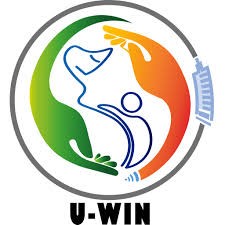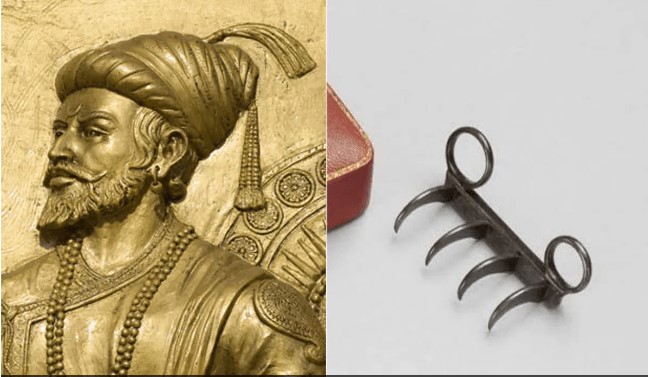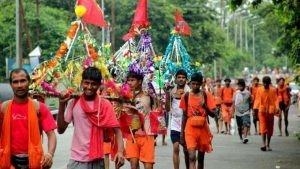- Home
- Prelims
- Mains
- Current Affairs
- Study Materials
- Test Series
July 18, 2024 Current Affairs
U-Win portal: A digital vaccine card for every child
Government u-win portal to redraw immunisation map.
U-Win portal:
- The government of India will launch a ’U-WIN’ portal for maintaining an electronic registry of routine immunisations. The portal under the Union Ministry of Health and Family Welfare has been designed on the lines of COVID-19 vaccine management system Co-WIN.
- The U-WIN programme has been designed to digitise the Universal Immunisation Programme (UIP) and it is presently being run in a pilot mode in two districts of each state and Union Territory.

Problem with the existing system
- At present vaccination records under UIP are being maintained manually which has led to duplication and exclusion of beneficiaries.
- Inadequate monitoring of targeted pregnant mothers and children has in certain instances led to multiple vaccination and doses.
- The system is also plagued by the absence of a mechanism of individual tracking of vaccinated mother and child.
- Another major issue is that immunisation at private health facilities is not recorded.
- There is also lack of awareness among beneficiaries about sessions, location and date, especially in urban areas and iniquity in immunisation coverage in states/UTs.
Features
- The platform generates a uniform QR-based,digitally verifiable e-vaccination certificate, similar to Covid vaccination certificate, which can be accessed anytime by the citizens through a single click.
- The U-WIN is going to be the single source of informationfor immunisation services which will record pregnancy details and outcome, new-born registration and immunisation at birth.
- It will update vaccination status, and delivery outcome, among others, in real time.
- Citizens can self-register for vaccinationsvia the U-WIN web portal or its Android mobile application, select preferred vaccination centres, and schedule appointments.
- Automated SMS alerts inform citizens about registration confirmations, administered doses, and upcoming dose reminders, ensuring timely and age-appropriate vaccinations.
- It also facilitates the creation of Ayushman Bharat health account (ABHA)IDs for comprehensive health record maintenance.
Universal Immunisation Scheme
- India’s Universal Immunization Programme (UIP) is a part of the Reproductive and Child Health (RCH) Program under National Health Mission (NHM).
- It is one of the largest public health programs in the world under which vaccination is being provided free of cost to all pregnant women & children.
- Vaccination can be availed against 12 vaccine preventable diseases: nationally against 11 diseases- Diphtheria, Pertussis, Tetanus, Polio, Measles, Rubella, severe form of childhood Tuberculosis, Rotavirus Diarrhoea, Hepatitis B, Meningitis & Pneumonia caused by Hemophilus Influenza Type B and Pneumococcal Pneumonia and sub-nationally against 1 Disease - Japanese Encephalitis (JE vaccine is provided only in endemic districts).
Rural road scheme: Pradhan Mantri Gram Sadak Yojana (PMGSY)
- Centre plans Rs 1.9-lakh crore 4th phase of rural road scheme
- The Pradhan Mantri Gram Sadak Yojana (PMGSY) is a flagship scheme of the Indian government. The program aims to provide all-weather road connectivity to unconnected rural habitations. PMGSY was launched in 2000 as part of a poverty reduction strategy. The Ministry of Rural Development implements the program in collaboration with state governments. The program aims to connect eligible unconnected habitations with all-weather roads. The scheme has been implemented in three phases since its launch in 2000.
Objectives
- To connect unconnected Habitations with adequate all-weather roads. A habitation which was previously provided all-weather connectivity would not be eligible even if the current condition of the road is bad.
- The program''s unit is a Habitation, not a revenue village or a panchayat. A population concentration whose location remains constant throughout time is referred to as a "habitation."
Latest Funding Pattern:
- The fund allocation to states has been made in subsequent years commensurate with the value of projects sanctioned to states.
- TheUnion Government bears 90% of the project cost in respect of projects sanctioned under the scheme in North-Eastern and Himalayan States, whereas for other states the Union Government bears 60% of the cost.
PMGSY - Phase I
It was launched in December 2000.
Targets: Providing road connectivity to 1,35,436 habitations and upgradation of 3.68 lakh km of existing rural roads.
Phase II of PMGSY
It was initiated in 2013 to upgrade the existing 50,000 km rural road network.
PMGSY Phase I was still in progress, and PMGSY phase II called for upgrading the roads that had previously been constructed for village connectivity to improve rural infrastructure.
PMGSY - Phase III
It was launched in July 2019.
The duration of the scheme is 2019-20 to 2024-25.
It gives priority to facilities like; Gramin Agricultural Markets (Grams), Higher Secondary Schools and Hospitals.
Grams are retail agricultural marketplaces for agricultural products located close to the farm that supports and facilitate a more effective exchange of the farmers'' supply.
It is proposed that 1, 25,000 km of road in the States be integrated under the PMGSY-III Plan.
Challenges Associated with PMGSY
- The inadequate availability of funds poses a major challenge for PMGSY.
- Road construction is a costly endeavour.
- Regular funding is necessary for the maintenance and upkeep of these roads.
- Government revenues are strained, making it difficult to allocate dedicated funds for the program. More funding can lead to project delays.
- Inefficient planning and management can result in material wastage.
- Excessive use of materials and exceeding the project budget can cause project delays.
- Efficient management and careful planning can prevent material wastage.
- Challenging terrains and harsh weather conditions in rural areas make road construction and maintenance difficult.
Way Forward
- Rural Road Connectivity is a key component of Rural Development as it promotes access to economic and social services.
- Further, it helps in generating increased agricultural incomes and productive employment opportunities in India.
- In this regard, the government can consider engagement with international financial institutions to construct basic rural infrastructure.
Karnataka State Employment of Local Candidates in the Industries, Factories and Other Establishments Bill, 2024
- Karnataka halts jobs Bill as industry raises uproar
- The Karnataka State Employment of Local Candidates in the Industries, Factories and Other Establishments Bill, 2024.
The Karnataka Cabinet has approved the Bill requiring industries, factories, and other establishments to appoint local candidates in 50% of management positions and 75% in non-management positions.
Eligible Candidate
- Birth and Domicile: Born in theState of Karnataka. Domiciled in the State for a period of 15 years.
- Language Proficiency: Capable of speaking, reading, and writing Kannada Passed a required test conducted by the nodal agency.
- Educational Requirement: Secondary school certificate with Kannada as a language.Alternatively, pass a Kannada proficiency test as specified by the nodal agency notified by the government.
Background and Demand:
- The Bill comes amid demands for 100% job reservation for Kannadigas.
- Earlier in July, Kannada organizations held rallies demanding the immediate implementation of the Sarojini Mahishi report, which recommended quotas for locals in government and private sector jobs.
- The Sarojini Mahishi Committee, led by former Union Minister Sarojini Mahishi, submitted a report in 1984 with 58 recommendations, including 100% reservation for locals in group C and D jobs in Central government departments and public sector undertakings (PSUs) operating in Karnataka.
Concern raised:
- Industry Concerns: Some industry representatives argue that the bill might lead to a talent shortage, especially in sectors requiring specialized skills.
- Legal Challenges: The bill could face legal scrutiny, especially concerning its alignment with national laws and constitutional provisions regarding the right to employment.
- Implementation Issues: Effective monitoring and enforcement of the bill’s provisions could pose significant challenges.
Way Forward
- Focus on Human development: The government shouldtrain the labour and also pose restrictions on the contract by the industrial sector which pose a “hire and fire” basis and promote long-term contracts.
- Shifting Government Focus from Employment Guarantees to Inequality Reduction: The governments should create an environmentthrough their policies such that those policies can help minimize inequalities in income, status, facilities, and opportunities. So, the government should focus on its role rather than guaranteeing employment.
- Safeguarding Fundamental Rights in Policy Formulation:It is crucial to guarantee that any policy decision aligns with the Constitution of India, upholding the fundamental rights of citizens and avoiding any violation thereof.”
Wagh nakh
Shivaji’s wagh nakh from U.K. to be displayed in Satara.
What is the ''wagh nakh''?
The Wagh Nakh is a special dagger that may be concealed in the hand or held between the fingers. It contains four or five curved blades that are attached to a crossbar or glove and are designed to sever muscle and skin. This dagger’s name, Wagh Nakh, which means “tiger’s claw” in English, is supposed to have been influenced by the weapons of huge animals.

Chhatrapati Shivaji''s Defence with the ''Wagh Nakh'':
- Chhatrapati Shivaji faced Afzal Khan, a Bijapur general assigned to stop Shivaji''s strong campaigns in the Konkan. Khan suggested a peaceful meeting, but Shivaji, anticipating danger, came prepared.
- He concealed a ''wagh nakh'' and wore chainmail (armour made from small metal rings) under his attire. When Khan attacked, Shivaji''s ''wagh nakh'' struck, resulting in Khan''s death, ultimately securing Shivaji''s victory.
The Journey of the Wagh Nakh to London
- The wagh nakh was brought to Britain by East India Company officer James Grant Duff (1789-1858), who served as the Company Resident in the Satara State from 1818 to 1822.
- Duff had a fitted case made for the weapon and inscribed it with details about its historical significance.
Chhatrapati Shivaji Maharaj:
- He was born on 19th February 1630 at Shivneri Fort in District Pune in the present-day state of Maharashtra.
- He was born to Shahaji Bhonsle, a Maratha general who held the jagirs of Pune and Supe under the Bijapur Sultanate, and Jijabai, a pious woman whose religious qualities had a profound influence on him.
- Shivaji was not named after Lord Shiva. His name was derived from the name of a regional deity – ‘Goddess Shivai.’
Kanwar Yatra
- It is an annual Hindu pilgrimage observed every year by Lord Shiva devotees.
- It usually starts in the month of July or August, commonly known as the month of Sawan, according to the Hindu calendar.

Mythological Origins of Kanwar Yatra
- Samudra Manthan:Kanwar Yatra is believed to have originated from the mythological story of Samudra Manthan, where Lord Shiva consumed poison to save the world. To alleviate the effects of the poison, all the gods poured water from the Ganga River on Lord Shiva.
- King Rama’s Offering:Another version suggests that the ritual of Kanwar Yatra began when King Ram offered water from the Ganga to a statue of Lord Shiva (shivalinga) in an earthen pot.
Process and activities during Kanwar Yatra
- Lakhs of devotees from various parts of India wear saffron attire.
- They travel to Gomukh, Haridwar and Gangotri, on foot, to collect holy water of river ganga.
- This water is carried in two earthern pot which are Hung on a decorated bamboo stick, which is known as Kanwar.
- The bamboo stick along with earthen pot is balanced on the soldiers of devotees, Kanwarias.
- They believe that dust can impure the water hence they keep the earthen pot hung all the time and do not put them on ground.
- Various Kanwar camps to ease the travel of devotees are set up across the travel routes where they can hang their Kanwars, take rest, get free meals and medical assistance.
- Finally, this water is brought to their native place and offered to Lord Shiva.









 Latest News
Latest News
 General Studies
General Studies